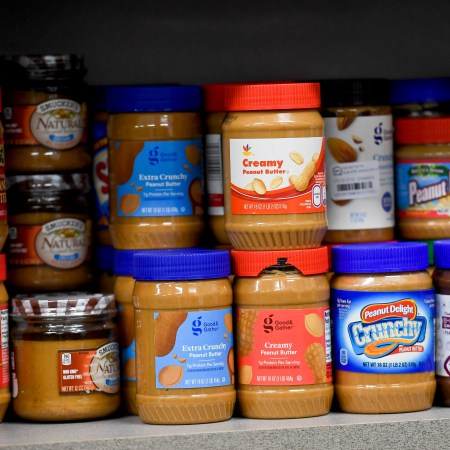In Margot Robbie’s memorable Hot Ones appearance, she shares that a professional freediver taught her how to hold her breath for full five minutes, as part of her preparation for the first Suicide Squad film. Robbie tells host Sean Evans that, with proper training, he could also learn how to hang out underwater for an absurd amount of time:
“He teaches you how to take a deep breath, how to expand your diaphragm. [But] the most important thing he teaches you is what happens when your body is deprived of oxygen. Once you know, it isn’t that scary once it starts happening. You’ll have convulsions at this point, and so on … Then when you come up you have to purge your body of carbon dioxide. Some people might pass out like this, or like that, but it’ll be fine.”
At the time, the scuba community quickly figured out that Robbie was referring to Kirk Krack, a freelance freediver to the stars, who has also worked with James Cameron, David Blaine and Tiger Woods. Krack’s teachings are now common among serious freedivers, who willingly court those bodily contractions Robbie was referring to, in an effort to improve CO2 tolerance and stretch the diaphragm for maximum depth on a single breath.
If you aren’t a freediver, let alone a movie star playing a supervillian, the idea of willingly training your lungs to failure probably doesn’t sound too appealing. And considering most of us don’t have access to “Captain Kirk,” as Robbie likes to call him, messing around in the pool or ocean on your own is also downright dangerous. But the point remains — we all could be getting more air from our diaphragms if we trained them to operate more efficiently.
First off, keep in mind: you can’t have “strong lungs.” Lungs are just bags attached to the inside of the ribs that fill up with air. But you can strengthen the muscles tasked with filling up those bags (the diaphragm and intercostal muscles) with deliberate exercises, which over time could have a sizable impact on your body’s ability to use and distribute oxygen.
Back in 2012, an Olympic study discovered that synchronized swimmers — able to hold their breath underwater for an average of one minute — actually ranked second to long-distance runners in aerobic capacity. That’s because a number of elite runners actually train like swimmers, understanding that intense breathwork (either on land or underwater) can increase lung capacity.
While the average person takes in over 22,000 breaths a day and doesn’t give many of them much thought, athletes of a certain discipline can’t really afford to inhale and exhale at random. That’s why swimmers, runners, scuba divers and yogis regularly practice diaphragmatic breathing, which is the primary DIY method for optimizing breath and involves “stretching” the diaphragm. We grow up breathing in with our chests, but check out where the diaphragm sits within the body. It’s tucked in down there beneath the ribs.
The easiest way to demo diaphragmatic breathing, assuming you’re sitting in a chair at your desk, is to put one hand on your upper chest (where you normally suck in air from), and one down on your stomach, in the concave of your ribs. As you inhale through your nose, let your midsection push out, which will expand the diaphragm. As you exhale through the mouth, suck your stomach muscles towards your spine. Take note: the more upright you are, the harder this exercise is to pull off. You might want to start by lying down.
This is typical for breathwork, though. It’s supposed to be hard. We already struggle enough to make time for stretching and meditation. Lifters often don’t even remember to breathe when maxing out on the bench press. So regularly employing breathing exercises — and there are so many others to choose from, from nasal breathing to pursed lip breathing, four-square breathing to Buteyko breathing — may not always be top of mind.
But that’s where breathing trainers might be able to lend an assist. Years ago, UFC Hall of Famer Bas Rutten developed the O2 Trainer, a rubber mouthpiece meant to restrict airflow, which trainees wear in their mouths like a sort of adult pacifier. Rutten, an elite athlete and lifelong asthmatic, noticed as a child that he could run harder in the days immediately after an asthma attack, because his breathing muscles had been working harder. The concept is resistance training, basically — a “dumbbell for the diaphragm.”
Rutten’s breathing trainer, which you can find at his site here, and at Rogue Fitness here, is part of a series of portable devices meant to help you improve respiratory function. As Matt Mosman, a research scientist, endurance athlete and founder at EndurElite notes: “Respiratory trainers may look like a hoax, but the science behind them suggests they actually work.”
Recent studies have confirmed that these devices are an “effective ergogenic aid for sport performance” and specifically for runners, cyclists, rowers and swimmers. They can catalyze “diaphragm hypertrophy, respiratory muscle economy … and decreases in perceived breathlessness and exertion.” All you have to do is breathe into them. And that’s part of the sell; when there’s a physical tool there to A) hold your breathing accountable (you’re going to remember to do it if it’s in your pocket, and B) make that breathing more difficult (by increasing airflow resistance through a clever design), you can actually see “gains.”
Those gains will be more marginal in over-the-top elite athletes, who were likely born with top-notch oxygen distribution systems, but for someone looking to breathe a little easier — whether while crushing a marathon or just walking up the stairs — a breathing trainer is something to consider.
You might actually consider the newest model to market: Oumua. Currently crowdfunding on Kickstarter, with six days to go, the latest breathing trainer has raised over $80,000 of its original $5,000 goal. People, it would seem, are eager for better breathing. While previous breathing trainers have been somewhat performance-oriented and rudimentary, Oumua appears determined to become more of a lifestyle product.
It’s available in a variety of colors, is completely waterproof (and washable), comes with a wireless charger and connects to an app via Bluetooth to monitor your breathing progress. The goal is quantifiable change over time, which is a smart approach. As any breathwork professional will tell you, the best results come from consistency. Robbie was likely meeting with Krack on a regular basis for weeks to ensure she could stay underwater as long as she did in the movie.
The stakes aren’t as high here, but a trainer like Oumua, designed to be used twice daily (and with separate inspiratory and expiratory sessions — a practice meant “to avoid imbalances or training overlaps”) could drastically increase the quality of your workouts, and over time, your quality of life. To learn more about the device, which starts shipping out in February of next year, head here.
This article was featured in the InsideHook newsletter. Sign up now.






















